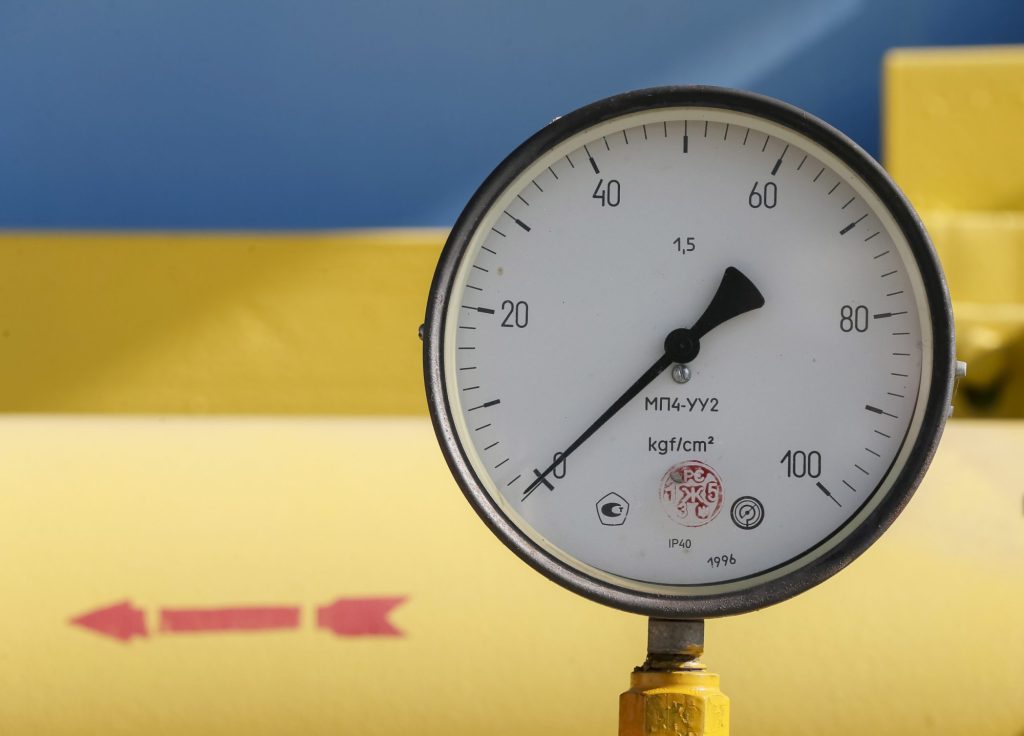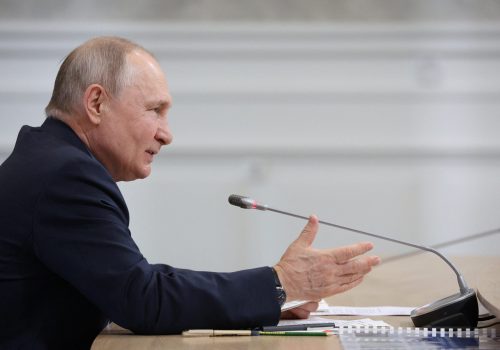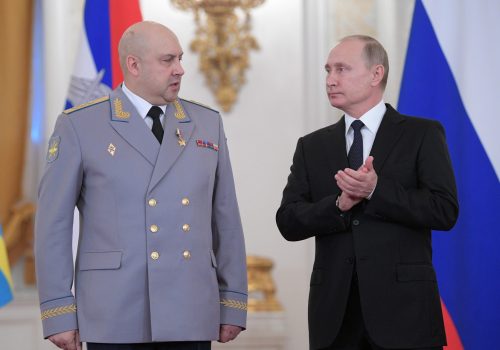
Ukraine’s gas storage facilities can play a key role in European energy security

Russia’s full-scale invasion of Ukraine has led to dramatic changes in the European energy market, with countries across the continent moving to end years of growing reliance on Russian gas. However, more can still be done to safeguard European energy independence and prevent the further weaponization of Russian exports. In the search for greater energy security, EU officials and individual member states should explore the opportunities presented by Ukrainian gas storage.
Ukraine’s underground gas storage facilities are the largest in Europe and offer extensive untapped potential. In order to make the most of this potential, however, considerable international investment will be necessary along with guarantees to cover war-related risks.
Constructed during the Soviet era as part of the infrastructure to support Russian gas deliveries to European markets, Ukraine’s gas storage facilities have an overall capacity of 31 billion cubic meters. These facilities are overwhelmingly concentrated in the west of the country, far from the present front lines of the Russian invasion and close to the borders with EU member states Poland, Slovakia, Hungary, and Romania.
Subscribe to UkraineAlert
As the world watches the Russian invasion of Ukraine unfold, UkraineAlert delivers the best Atlantic Council expert insight and analysis on Ukraine twice a week directly to your inbox.

-
-
-
This field is for validation purposes and should be left unchanged.
Following the collapse of the Soviet Union, state-owned Russian energy giant Gazprom continued to utilize Ukraine’s underground storage facilities until 2013. The decision to stop using these facilities came as relations between Russia and Ukraine entered a period of sharp deterioration, and was part of a broader Russian strategy to bypass the Ukrainian gas transit system entirely and develop alternative routes to European customers.
In line with this new policy, Gazprom began to lease growing volumes of gas storage space inside the European Union. This would ultimately lead to severe price hikes and accusations against Russia of weaponizing energy supplies when Gazprom failed to replenish storage volumes in 2021. Europe has since moved to prevent this situation from repeating by regaining control over energy storage facilities and implementing a range of restrictions.
Over the past decade, Ukraine responded to Russia’s aggressive energy sector stance by reforming its own gas industry in order to attract new partners. In 2019, Kyiv introduced attractive tariffs and trader-friendly regulations. In 2020, Ukraine brought its entire regulatory framework into line with the EU. In spring 2023, Ukrainian gas storage operator Ukrtransgaz was certified under EU gas storage regulations. These measures have proved somewhat effective, with European traders storing around 10 billion cubic meters of gas in Ukraine’s underground facilities in 2020-21. However, this was primarily reverse flow Russian gas passing through Ukraine.
Eurasia Center events

Today, Ukraine has the potential to distribute up to 200 million cubic meters of gas per day to EU markets. The real logistical challenge lies in the limited capacity to transport large volumes of gas in the other direction from the EU to Ukraine’s storage facilities. Present capacity provided by Slovakia, Hungary, and Poland is inadequate.
Further integration of Ukraine’s gas storage infrastructure into European energy networks would require an expansion of physical capacities within the EU. Fortunately, this could be at least partially achieved by enhancing existing infrastructure rather than constructing entirely new pipelines.
For example, four major pipelines from Ukraine pass through Slovakia to Austria and the Czech Republic and connect to German pipelines originally built to transport Russian gas delivered via the Nord Stream pipelines. These German pipelines could be repurposed to deliver gas from the country’s LNG terminals in the North Sea to Ukrainian underground storage facilities. Slovakia’s existing gas transit network currently has sufficient spare capacity for this task.
Investments would be necessary to improve the Polish and Hungarian gas transit systems in order to transport desired volumes of gas to Ukraine’s storage facilities. With an LNG terminal of its own and interconnections with neighboring Baltic countries, Poland is particularly well-placed to benefit from improved access to Ukrainian storage facilities.
The European Commission recognized the strategic significance of Ukraine’s underground storage capacity in 2021, but progress on the European front toward taking advance of this infrastructure remains underwhelming. Clearly, the security challenges presented by Russia’s ongoing invasion must be addressed through enhanced guarantees for customers storing gas in Ukraine. Beyond this, infrastructure upgrades are also needed.
With the winter heating season now only a few months away, the clock is ticking. Ukraine’s storage facilities can help Europe cope with any seasonal spikes in demand for gas, but present infrastructure is insufficient. Looking ahead, Europe would stand to reap the benefits of increased import capacity to Ukraine’s gas storage facilities long after the coming winter season is over. Indeed, this should be viewed as a strategic initiative with the potential to pave the way for a new era of European energy security.
Sergiy Makogon is a Kyiv-based energy expert and former CEO of Gas TSO of Ukraine.
Further reading
The views expressed in UkraineAlert are solely those of the authors and do not necessarily reflect the views of the Atlantic Council, its staff, or its supporters.

The Eurasia Center’s mission is to enhance transatlantic cooperation in promoting stability, democratic values and prosperity in Eurasia, from Eastern Europe and Turkey in the West to the Caucasus, Russia and Central Asia in the East.
Follow us on social media
and support our work
Image: A pressure gauge is seen at a gas compressor station and underground gas storage facility in the village of Mryn, north of Kyiv. October 15, 2015. (REUTERS/Gleb Garanich)






